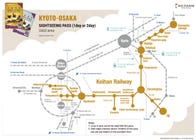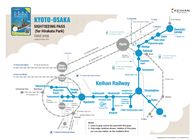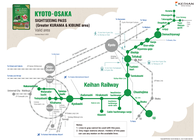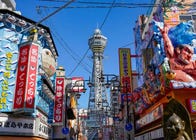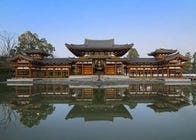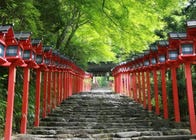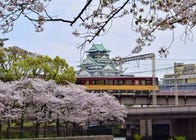
Everything You Need To Know About the Kyoto-Osaka Sightseeing Pass
- Written by: James Davies
Discover how to see the most popular attractions in two of Japan’s biggest cities with the Kyoto-Osaka Sightseeing Pass.
(Main image: Klook)
- Table of Contents
-
- Types of Kyoto-Osaka Sightseeing Pass & Prices
- Why Choose the Kyoto-Osaka Sightseeing Pass?
- What are the Main Sights to See with the Kyoto-Osaka Sightseeing Pass?
- Practical Information About the Kyoto-Osaka Sightseeing Pass
- Alternatives to the Kyoto-Osaka Sightseeing Pass
- Conclusion - Save Time and Money with the Kyoto-Osaka Sightseeing Pass
Kyoto and Osaka are the two most popular destinations in Japan’s Kansai region. Between them, both cities have an incredible and diverse range of attractions to explore. As the former capital of Japan, Kyoto is rich in history, culture, and tradition. Osaka is a full-throttle feast for the senses, famous for its bold and brash neon and delicious food, including okonomiyaki and takoyaki.
A great way to travel between Kyoto and Osaka and see the main attractions and highlights of both cities is with the Kyoto-Osaka Sightseeing Pass. The Kyoto-Osaka Sightseeing Pass is available as a 1-Day or a 2-Day pass and lets you take unlimited journeys on specific train lines between the two cities.
Types of Kyoto-Osaka Sightseeing Pass & Prices
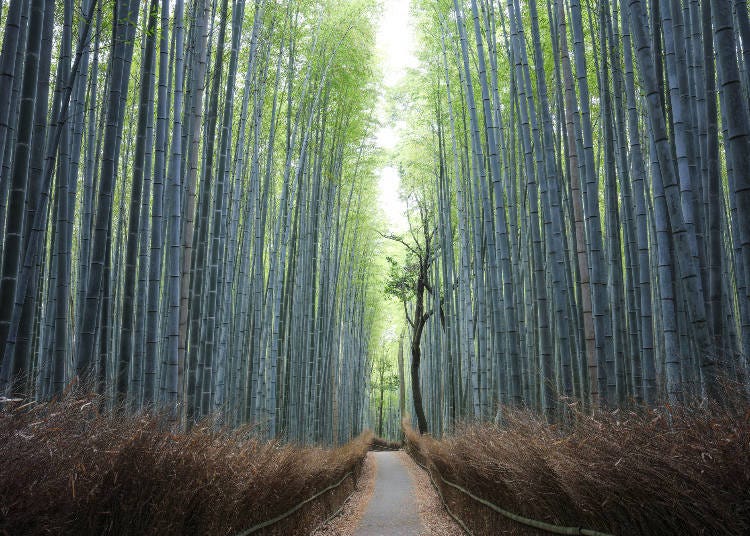
The Kyoto-Osaka Sightseeing Pass lets you take unlimited journeys on specific train lines operated by Keihan between Demachiyanagi Station in Kyoto and Nakanoshima Station in Osaka.
The Kyoto-Osaka Sightseeing Pass is available in five different options. Four of the passes are available as 1-Day passes, and one of these is also available as a 2-Day pass. The variations of the pass also allow unlimited travel on certain other lines and modes of transport too which we’ll cover below.
Here’s a full breakdown of each type of Kyoto-Osaka Sightseeing Pass.
Kyoto-Osaka Sightseeing Pass (1-Day or 2-Day)
The 1-Day and 2-Day Kyoto-Osaka Sightseeing Pass lets you take unlimited journeys on the Keihan Main Line between Demachiyanagi Station in Kyoto and Nakanoshima Station in Osaka. This pass can also be used to travel between Hirakatashi Station and Kisaichi Station on the Katano Line and Chūshojima Station and Uji Station on the Keihan Uji Line. Both of these passes can also be used to travel on the Iwashimizu-hachimangu-sando-cable Line that travels along Mount Otokoyama to Iwashimizu Hachimangu Shrine.
A full map showing all of the areas in which the 1-Day and 2-Day Kyoto-Osaka Sightseeing Pass can be used can be found on the official website (link below).
The Kyoto-Osaka Sightseeing Pass (for Hirakata Park)
The Kyoto-Osaka Sightseeing Pass (for Hirakata Park) is only available as a 1-Day pass. This pass includes unlimited travel on the same lines as the Kyoto-Osaka Sightseeing Pass but also includes entry to Hirakata Park, an amusement park located roughly halfway between Kyoto and Osaka. This might be a good option if you’re traveling with young children or if you’re just young at heart. Hirakata Park features numerous rides, including roller coasters, a giant Ferris wheel, fairground rides, and a petting zoo.
A map showing the full network of train lines covered by the Kyoto-Osaka Sightseeing Pass (for Hirakata Park) can be found on the official website (link below).
Kyoto-Osaka Sightseeing Pass (Greater KURAMA & KIBUNE area)
The Kyoto-Osaka Sightseeing Pass (Greater KURAMA & KIBUNE area) is available only as a one-day pass. This pass can be used on the same lines as the one-day and two-day Kyoto-Osaka Sightseeing Pass and offers unlimited travel on the Eizan Railway line from Demachiyanagi Station to Kurama Station in the mountainous area to the north of Kyoto.
A route map showing all of the train lines that can be used with the Kyoto-Osaka Sightseeing Pass (Greater KURAMA & KIBUNE area) can be found on the official website (link below).
Kyoto-Osaka Sightseeing Pass 1 Day (Osaka Metro)
As well as allowing travel on the Keihan Line, the Katano Line, the Uji Line, and the Iwashimizu-hachimangu-sando-cable Line, this 1-Day pass also includes unlimited travel on all Osaka Metro lines and Osaka City Bus routes.
A route map showing the travel services covered by the Kyoto-Osaka Sightseeing Pass 1 Day (Osaka Metro) can be found on the official website (link below).
Comparing the Costs of the Different Types of Kyoto-Osaka Sightseeing Pass
Here’s a breakdown of the costs of each type of Kyoto-Osaka Sightseeing Pass.
- 1,000 yen
- 1,500 yen
- 1,700 yen
- Adults: 1,200 yen
- Children 6-11: 800 yen
- Infants 2-5: 600 yen
- 1,000 yen
Who Might Benefit the Most from the Kyoto-Osaka Sightseeing Pass?
The Kyoto-Osaka Sightseeing Pass will mostly appeal to those who only have a short time to spend visiting Kyoto and Osaka and want to see as many of the two cities’ main attractions as possible, and possibly some of the surrounding areas. The relatively low cost of each pass also means that they’re a great option for those looking to keep costs down while traveling between Kyoto and Osaka and perhaps to other areas nearby, such as the city of Uji.
While the short validity period of these passes might seem a little restrictive, the low-cost and fairly wide area that they cover means that they can be extremely good value for money. If you plan to stay longer in Kansai or want to travel to other parts of the region that are a little further afield, there are alternative travel passes that will be of more benefit which we’ve listed below.
Where to Buy the Kyoto-Osaka Sightseeing Pass
The Kyoto-Osaka Sightseeing Pass can be bought online from sites such as Klook.
Why Choose the Kyoto-Osaka Sightseeing Pass?
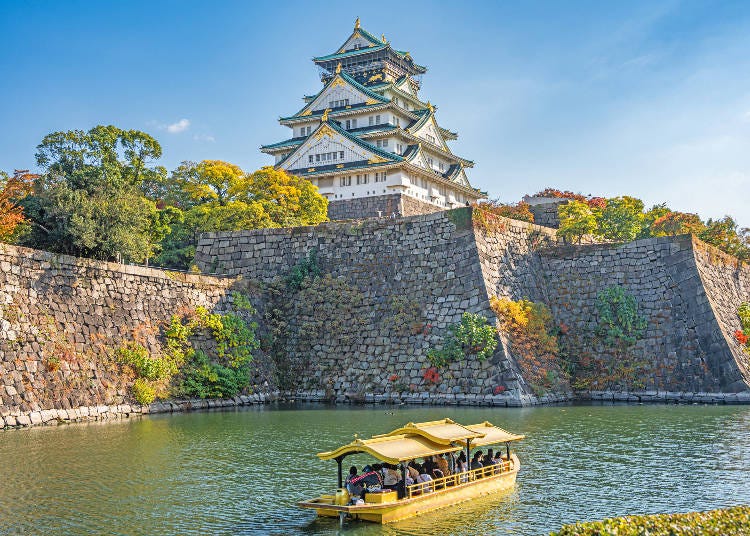
Save Money on Travel In and Around Kyoto and Osaka
All of the different types of Kyoto-Osaka Sightseeing Pass offer exceptional value for money. You’ll struggle to find a better deal on train travel between Kyoto and Osaka or any of the surrounding areas offered by variations of the pass. If you’re looking to keep costs as low as possible while traveling in and around Kansai’s two biggest cities then this is the pass for you.
Easy Access to Osaka and Kyoto’s Biggest Attractions
Even though the Kyoto-Osaka Sightseeing Pass only allows you to travel on a handful of train lines, you can easily visit the two city’s main attractions by using the pass. Trains on the Keihan Main Line call at stations that serve such famous landmarks and sights as Fushimi Inari Shrine and the geisha district of Gion in Kyoto and Osaka Castle.
No Need To Queue to Buy Numerous Tickets
Another major benefit of buying the Kyoto-Osaka Sightseeing Pass is that it means you don’t have to queue up to buy tickets for multiple journeys. Instead, you can simply hop on the train and get on with exploring Kyoto, Osaka or any of the other destinations nearby that your pass covers, rather than eating up time in queues for ticket machines.
Good Option if You’re Short on Time in Kansai
The Kyoto-Osaka Sightseeing Pass is an especially good option if you only have a short time to spend in either city. In truth, the pass covers a wider area than you could realistically visit in one or two days. However, the low price and the good location of many of the stations that you can travel to make this a very attractive pass if you want to see Kyoto and Osaka’s biggest attractions in a very short space of time.
Also, if this isn’t your first time in Kyoto or Osaka and you’d prefer to head off the beaten track, you could easily use the Kyoto-Osaka Sightseeing Pass to discover a different area, such as the historic city of Uji, or Kurama or Kibune regions to the north of Kyoto.
The Osaka Metro 1-Day Pass is Perfect for Exploring Osaka
The Kyoto-Osaka Sightseeing Pass that includes the option of unlimited travel on the Osaka Metro and local buses is perfect for exploring Osaka. With this pass, you can travel around the city with ease and explore the vast majority of Osaka’s main attractions. Perhaps the best way to use this pass would be on a day trip from Kyoto, as it can also be used to travel between the two cities.
Potential Drawbacks of the Kyoto-Osaka Sightseeing Pass
Only Allows Travel with One Train Company
Perhaps the biggest drawback of the Kyoto-Osaka Sightseeing Pass is that it only allows you to travel on a small number of train lines operated by Keihan. It does not allow for travel on JR lines. While the pass does make it easy to travel between Kyoto and Osaka, as well as visiting other areas nearby, it may sometimes be a bit limiting if you want to venture to destinations served by other train operators that the pass doesn’t cover.
Not Ideal for Traveling Within Kyoto or Osaka
With the exception of the 1-Day pass that includes the option to travel on Osaka’s Metro and local buses, the majority of the Kyoto-Osaka Sightseeing Passes are not ideal for traveling within either city. If you plan to travel to areas within Kyoto or Osaka not covered by the Keihan Main Line you would need to supplement the pass by paying for travel on other forms of transport.
1-Day Passes Don’t Give You a Huge Amount of Time to Explore
Due to the short period of time they can be used for, the Kyoto-Osaka Sightseeing Pass is not ideal if you plan on exploring the two cities in any great detail. If you choose to buy any of the 1-Day Kyoto-Osaka Sightseeing Passes you will probably need to plan your day in advance as there will only be so much you can do in the time that you have. If you choose to buy the 2-Day Pass you could potentially see the best of both cities by spending a day in each, but some people might find this to be a little rushed.
What are the Main Sights to See with the Kyoto-Osaka Sightseeing Pass?
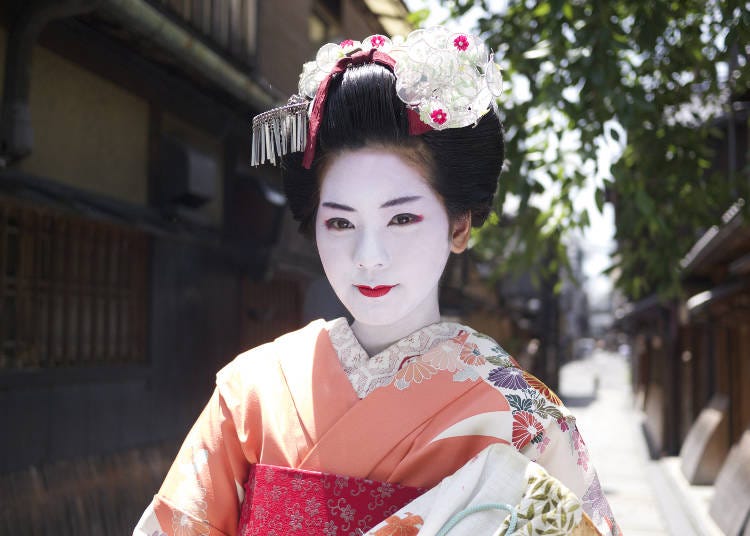
Here are a few of the main destinations to explore with the Kyoto-Osaka Sightseeing Pass
Kyoto - As the former capital of Japan, Kyoto is brimming with thousands of years of history and culture. Temples and shrines are amongst Kyoto's most famous landmarks, from the dazzling Golden Pavilion at Kinkakuji Temple, the torii gates at Fushimi Inari Shrine and the sweeping views of the city from the veranda of Kiyomizu-dera Temple. Elsewhere you can take a stroll around the famous geisha district of Gion or amongst the swaying bamboo trees at Arashiyama Bamboo Grove.
Osaka - Osaka is the most fun and frenetic city in Japan. While Osaka Castle is one of the city’s most famous sights, at heart Osaka is a modern metropolis. Amongst Osaka’s many landmarks are the iconic Tsūtenkaku Tower and the neon Glico Man, another symbol of the city. A foodies’ dream, Osaka is easily one of the best places to eat in Japan, with great food to be found at Kuromon Ichiba Market or any of the tempting takoyaki stalls in glitzy Dotonbori.
Uji - The city of Uji is only a 30-minute train ride from Kyoto. During the time that Kyoto was the capital of Japan, many traders and suppliers of green tea established themselves in Uji. Today, Uji is still home to many traditional tea houses and shops where you can sample a bowl of some of the finest matcha in Japan. In the heart of the city is the UNESCO World Heritage-listed Byodo-in Temple, famous for its stunning Phoenix Hall that features on the 10 yen coin.
Kurama and Kibune - Pick up the Kyoto-Osaka Sightseeing Pass (Greater KURAMA & KIBUNE area) to discover the ancient temples and shrines and beautiful scenery that lie just outside Kyoto. Only a 30-minute journey from Demachiyanagi Station, Kurama and Kibune are nestled in the mountains in the north of the city. A hiking trail through the forest links Kurama’s Kurama-dera Temple with the Kifune Shrine, founded over 1,600 years ago and dedicated to the God of Water.
Hirakata Park Amusement Park - The Kyoto-Osaka Sightseeing Pass (for Hirakata Park) includes entry to Hirakata Amusement Park, which is almost halfway between Kyoto and Osaka. Hirakata Park is ideal if you’re visiting Kyoto or Osaka with young children or if you’re after a shot of adrenaline. The park has dozens of rides and amusements that will keep young ones and thrill-seekers entertained, including roller coasters, water slides, haunted house rides, and much more. There’s also a small zoo with a variety of animals, including squirrel monkeys, otters, red pandas, and capybara.
Practical Information About the Kyoto-Osaka Sightseeing Pass
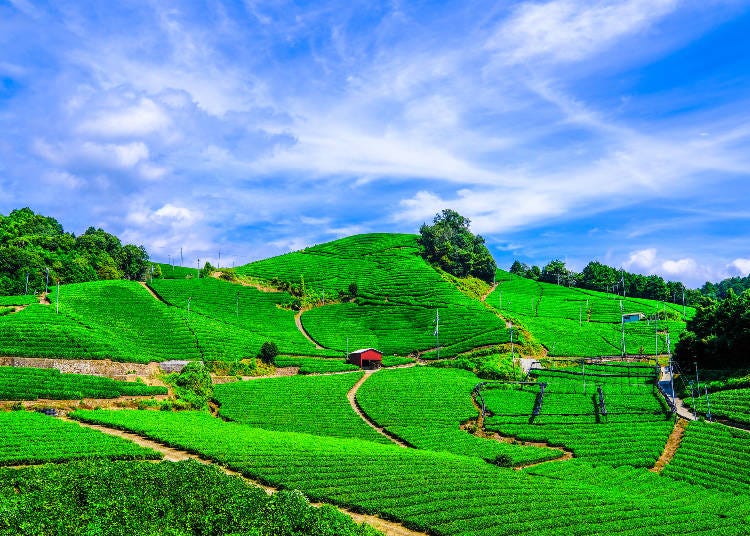
Who can buy the Kyoto-Osaka Sightseeing Pass?
The Kyoto-Osaka Sightseeing Pass is only available to buy for overseas visitors to Japan.
How long is the Kyoto-Osaka Sightseeing Pass valid for?
The Kyoto-Osaka Sightseeing Pass is on sale from April 1 2024 to March 31 2025. Any pass bought before the end of March 2025 is valid for use until April 30, 2025.
The 1-Day pass is not valid for a 24 hour period. 1-Day passes are valid until the end of the day that it is activated. The 2-Day Kyoto-Osaka Sightseeing Pass does not have to be used on consecutive days. Instead they can be used over any two different days during the validity period.
How do I activate the Kyoto-Osaka Sightseeing Pass?
After you’ve ordered the Kyoto-Osaka Sightseeing Pass, you will receive an email with an e-voucher. You must then exchange the e-voucher for a physical pass at a ticket office at Keihan stations.
In Kyoto, you can exchange the e-voucher for the pass at Keihan Railway Sanjo Station Ticket Office.
In Osaka, you can exchange the e-voucher at Keihan Railway Kitahama Station Ticket Office, Keihan Railway Kyobashi Station Ticket Office, Keihan Railway Temmabashi Station Ticket Office or Keihan Railway Yodoyabashi Station Ticket Office.
Alternatives to the Kyoto-Osaka Sightseeing Pass

Here are a few alternative passes you might want to consider if you plan on visiting Kansai.
Kansai Railway Pass - The Kansai Railway Pass is available as either a two-day or three-day pass and allows unlimited rail travel on twenty private railway lines to many destinations within the Kansai region. Learn more about it here.
The Kintetsu Rail Pass - The Kintetsu Rail Pass offers unlimited travel on Kintetsu train lines as well as specific bus routes and some cable cars within Kansai. This pass is available as a 1-Day, 2-Day or a 5-Day pass.
Conclusion - Save Time and Money with the Kyoto-Osaka Sightseeing Pass
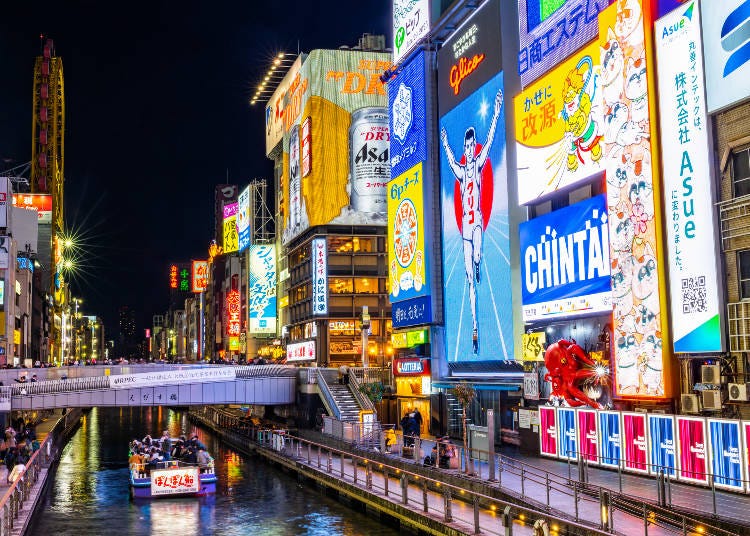
Offering excellent value for money, the Kyoto-Osaka Sightseeing Pass is a fantastic way to see some of the best attractions and landmarks in Kansai’s two biggest cities. Available in a variety of formats and perfect for those spending a short amount of time in the region, you can also use the Kyoto-Osaka Sightseeing Pass to explore several fascinating areas that lie off the beaten path.
For full details on the Kyoto-Osaka Sightseeing Pass, see the official website (https://www.keihan.co.jp/travel/en/trains/passes-for-visitors-to-japan/).
Originally from Cardiff in the UK, James has been working as a freelance writer since moving to Japan in 2020. Having first visited Japan in 2013, James has been to each of the country’s 47 prefectures. A lover of sushi, sumo and sake, when not writing, he is either exploring Tokyo or planning a trip to a new corner of Japan.
*Prices and options mentioned are subject to change.
*Unless stated otherwise, all prices include tax.
Popular Tours & Activitiess
Recommended places for you
-
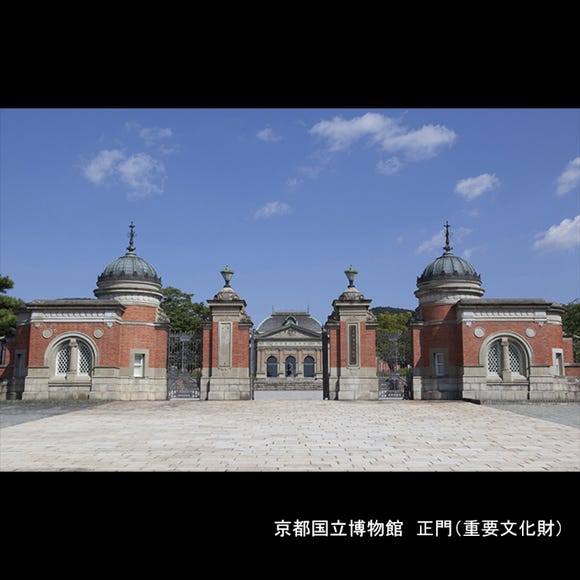
Kyoto National Museum
History Museums
Kyoto Station, To-ji Temple
-
Goods

Yoshida Gennojo-Roho Kyoto Buddhist Altars
Gift Shops
Nijo Castle, Kyoto Imperial Palace
-

Kambei Sannomiyahonten
Yakiniku
Kobe, Sannomiya, Kitano
-

Jukuseiniku-to Namamottsuarera Nikubaru Italian Nikutaria Sannomiya
Izakaya
Kobe, Sannomiya, Kitano
-

ISHIDAYA Hanare
Yakiniku
Kobe, Sannomiya, Kitano
-

Kanzenkoshitsuyakinikutabehodai Gyugyu Paradise Sannomiya
Yakiniku
Kobe, Sannomiya, Kitano
-

This Winter, Godzilla Takes Over Haneda Airport
by: Guest Contributor
-

How to Get Don Quijote's Exclusive 2025-2026 Winter Gift (+Tax-Free Savings)
-
Ad

Preserving the Beauty of World Heritage Site Shirakawa-go for the Future Through Responsible Travel
-
Ad

Complete Guide to Ueno's National Museum of Nature and Science, the Perfect Place to Visit on Rainy Days or With Children
-
Ad

(Opening in Jan 2026) 'THE SUMO LIVE RESTAURANT HIRAKUZA GINZA TOKYO!' 5 Exciting Ways to Experience the World of Sumo!
-

First Japan Cherry Blossom 2026 Forecast Announced! Here's When & Where to See Sakura in Japan
Inspiration for Accommodations
-

Spacious Family Hotel in Namba: 20 Comfortable Stays for Family Fun
-

Charming Hotels to Enjoy the Spectacular Views of Arashiyama's Autumn Leaves from Your Room
-

Experience Stunning Views of Osaka Castle from Private Spaces: Top Hotels Near Osaka Castle
-

Recommended by Visitors! Arashiyama's Best-Rated Hotels
-

Family-Friendly Universal Studios Japan Hotel with Excellent Access
-

Enjoy a Comfortable Stay in Osaka! 10 Hotels with Convenient Airport Shuttle Services
-

Top 10 Recommended Hotels Near Namba Station with Great Access
-

Enjoy Night Views from Your Room! Recommended Hotels in Namba Area
-

Kyoto vs. Osaka: Two Popular Destinations, Which to Choose?!
-

7 Must-Try Kyoto Ramen Shops - From Tasty Tori Paitan to Vegan Ramen Options!
-

38 Best Things to Do in Kyoto: See, Eat, and Shop Your Way Through Japan's Cultural Capital
-

Secrets to Shopping in Japan: Guide to Annual Sales in Japan & Where to Shop
by: Miyu Shimada
-

Kyoto Momiji: 5 Stunning Places to See Fall Colors in Kyoto
-

Visiting Kyoto During Cherry Blossom Season in 2026: Complete Guide & Viewing Tips
by: Cassandra Ling
- #best gourmet Osaka
- #things to do Osaka
- #what to do in kyoto
- #what to bring to japan
- #best gourmet Kyoto
- #new years in Osaka
- #what to buy in nanba
- #Visiting Osaka
- #onsen tattoo friendly arima
- #daiso
- #Visiting Kyoto
- #best japanese soft drinks
- #japanese fashion culture
- #japanese convenience store snacks
- #japanese nail trends













